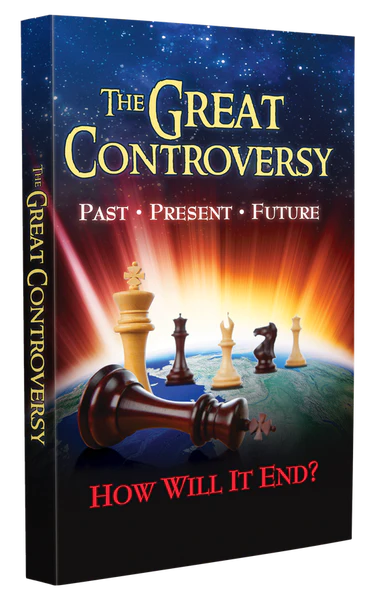
For a century, the approach has been to punish and stigmatize addicts, believing it would deter them. But what if everything we thought we knew about addiction is wrong?
In a thought-provoking TED Talk, Johann Hari challenges conventional wisdom, suggesting that the key to understanding and overcoming addiction lies not in chemical dependency, but in human connection. This article delves into the groundbreaking research and real-world examples that support this revolutionary perspective, offering new insights for anyone seeking to understand addiction, from individuals struggling with substance abuse to policymakers shaping drug treatment strategies.
The Chemical Hooks Myth: Debunking Traditional Addiction Theory
For decades, the prevailing belief has been that addiction is primarily a result of the chemical properties of drugs. The idea is that substances like heroin have “chemical hooks” that cause the body to become physically dependent, leading to compulsive drug-seeking behavior. However, this theory doesn’t fully explain the complexities of addiction.
The Hospital Diamorphine Case Study
Consider the common scenario of a patient receiving diamorphine (medical-grade heroin) in a hospital setting after an injury. These patients are exposed to the same chemical hooks, often for extended periods. Yet, the vast majority do not become addicts. This discrepancy raises a critical question: If addiction is solely about chemical dependency, why don’t more patients become addicted to painkillers?
The Rat Park Revolution

To challenge the traditional view, Professor Bruce Alexander conducted a series of experiments in the 1970s that would change the way we think about addiction. In these experiments, rats were given a choice between plain water and water laced with heroin or cocaine. When isolated in a cage, rats overwhelmingly chose the drugged water, often to the point of overdose.
However, when Alexander created “Rat Park,” a stimulating environment with plenty of space, toys, social interaction, and mating opportunities, the results were dramatically different. In Rat Park, rats showed little interest in the drugged water, with overdose rates plummeting from nearly 100% in isolation to 0%.
This groundbreaking research suggests that addiction is not solely about the drug itself, but also about the environment in which it is used. When individuals are isolated and lack meaningful connections, they may turn to drugs as a way to cope.
The Vietnam War: A Human Laboratory for Addiction
The Vietnam War inadvertently provided another compelling case study on addiction. During the war, approximately 20% of American troops were using heroin. This raised fears of a massive wave of addiction upon their return home.
The Surprising Statistics
However, a study published in the Archives of General Psychiatry revealed a surprising outcome: 95% of the soldiers who used heroin in Vietnam simply stopped using upon returning home. They didn’t go to rehab, and they didn’t experience withdrawal.
Environmental Factors
This phenomenon challenges the chemical hooks theory. The soldiers’ environment had changed drastically. In Vietnam, they faced immense stress, trauma, and isolation. Back home, they were reunited with their families, friends, and communities. The change in environment played a significant role in their ability to overcome addiction.
The Portugal Experiment: A Revolutionary Approach
In 2000, Portugal faced a severe drug crisis, with 1% of the population addicted to heroin. The country’s traditional approach of punishment and stigmatization only worsened the problem.
Historical Context
Portugal decided to take a radical step: decriminalizing all drugs. But decriminalization was only one part of a comprehensive strategy.
The New Model
Portugal shifted its focus from punishment to reconnection. The government invested heavily in job creation programs, microloans for addicts to start small businesses, and social support services. The goal was to give addicts a reason to get out of bed in the morning and reconnect with society.
The results were remarkable. Injecting drug use decreased by 50%, overdose deaths plummeted, and HIV rates among addicts declined significantly. Addiction rates, as measured by multiple studies, also decreased.
Portugal’s success demonstrates the power of connection in addressing addiction. By focusing on reintegration and providing opportunities for meaningful engagement, Portugal transformed its drug crisis into a public health success story.
Modern Connection Crisis
While the idea of a hyper-connected world is pervasive, many argue that the nature of these connections is superficial, leading to a modern connection crisis.
Digital Age Isolation
The rise of smartphones and social media has led to a paradox: we are more connected than ever before, yet many people feel increasingly isolated. These digital connections often lack the depth and authenticity of face-to-face interactions.
Research shows that the number of close friends people feel they can call on in a crisis has been declining steadily since the 1950s. At the same time, the amount of floor space in the average home has been increasing. This suggests that we have traded connection for material possessions and virtual relationships.
The Paradox of Modern Connection
This modern isolation has significant implications for mental health and addiction. When people lack genuine connections, they are more vulnerable to turning to substances or behaviors as a way to cope.
Practical Applications: Building Connection-Based Solutions
The insights from Johann Hari’s TED Talk and the research it highlights offer a new path forward in addressing addiction, focusing on building and strengthening connections.
Individual Level
- Maintain Unconditional Bonds: Support loved ones struggling with addiction without enabling their behavior.
- Create Meaningful Connections: Engage in activities that foster genuine relationships and a sense of belonging.
Societal Level
- Policy Implications: Advocate for policies that prioritize treatment and harm reduction over punishment.
- Community-Building Strategies: Support community programs that promote social interaction and connection.
- Prevention Through Connection: Invest in initiatives that address social isolation and promote mental health.
Conclusion
The opposite of addiction is not sobriety, but connection. By shifting our focus from punishment to connection, we can create a more compassionate and effective approach to addressing addiction. This requires a fundamental change in how we view addiction, recognizing it not as a moral failing, but as a symptom of disconnection.
The research and examples discussed in this article demonstrate the power of human connection to heal and transform lives. By prioritizing connection at the individual and societal levels, we can create a world where everyone has the opportunity to thrive.

